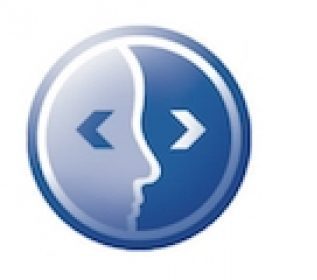Educational technology is a central concept when it comes to the digitalization of education. The contradictions and isomorphisms it contains shape the development of teaching and instruction in a fully digitalized world. Decisions about budgets for research and development, the establishment of chairs and institutes, as well as personnel and organizational development, vary depending on the underlying assumptions and manifestations associated with the use of (digital) technology in education.
A closer look quickly reveals: the term is characterized by a plurality of perspectives, vague references to the pedagogical whole, or tautological definitions.
“Educational technology is a complex, integrated process involving people, procedures, ideas, devices, and organizations for analyzing problems and devising, implementing, evaluating, and managing solutions to those problems involved in all aspects of human learning.” (AECT, 1977, p. 19)1
“Educational technology was an attempt to transfer instructional processes into schematic, formulaic, generalizable structures and to formulate universal principles about learning.” (Hof, 2018, p. 27 – own translation)2
[Educational technology refers to a] “discipline that explores and teaches different arrangements of learning conditions, the support of knowledge and skill acquisition, the influence of motivation and emotions, as well as the functionality of artifacts (especially media) for the purpose of promoting educational processes.” (Niegemann and Weinberger, 2020, p. 4 – own translation)3
However, it is precisely this flexibility and dynamism in the concept that makes it so interesting to me. When does a technology become educational technology? What is the relationship between technology and education, media and Instructional Design? When, for example, do AI-supported chatbots and writing aids become “educational technology”? How does this relate to Instructional Design? And to computer science? Why does one technology succeed in education while another does not? Who decides? Is educational technology innovative? Or is it a “Trojan horse” for progressive Instructional Designers?
The discourse seems to move between opposing positions that I would describe as socio-deterministic (“the instructional concept determines”) and techno-deterministic (“technical innovation drives instructional development”). One could stop at this point and say, “Okay, there are two theoretical positions, and one must either choose or abandon them.” However, this epistemological-pragmatic compromise does not resolve the specific questions associated with the definition—neither for educators dealing with technology nor for decision-makers setting up funding programs, especially when money, power, or progress is at stake.
So, what to do? I believe it makes sense not to get stuck in the contradictions and ambiguities but to learn from the situation that perhaps a different perspective is needed to better understand the “unity of contradictions” associated with educational technology. In my view, this requires a perspective as suggested by socio-material theories, particularly Actor-Network Theory. This involves theoretical assumptions and research strategies that can be roughly summarized as follows:
- A socio-technical perspective: Educational technology is a complex system of humans and technology. The entire system must be considered.
- A praxeological perspective: Educational technology arises from the collective practice of many participants. This practice must be traced.
- A post-digital view of media in education: The dichotomy between digital and analog is obsolete. Educational technology is merely the latest manifestation of a historically long, deep connection between technology and education, between media and Instructional Design. It is necessary to examine more closely what digitality has changed in this historical relationship.
- An Actor-Network-theoretical position: This means, among other things, that
- human and non-human (e.g., technical) actors are treated equally,
- no “shortcuts” to categories and models are taken when the inner connections are not yet clear,
- the system is always in motion, with actors constantly acting and reacting, meaning the system can always break apart,
- actors must be followed to understand how they jointly create a system.
My hope is that by following these perspectives and comparing the resulting models with experience and discourse, the phenomenon of “educational technology” will become more comprehensible. My goal is not to replace the living, kaleidoscopic image with a logical-geometrical schema, but rather to better understand how the reflections, refractions, and facets emerge.
- AECT – Association for Educational Communications and Technology (Ed.). (1977). The definition of educational technology. AECT, Publ. Dep. [↩]
- Hof, B. E. (2018). Der Bildungstechnologe. In S. Schenk & M. Karcher (Hrsg.), Überschreitungslogiken und die Grenzen des Humanen. (Neuro-)Enhancement – Kybernetik – Transhumanismus (Bd. 5, S. 27–51). epubli. https://www.pedocs.de/volltexte/2018/16105/ [↩]
- Niegemann, H., & Weinberger, A. (2020). Was ist Bildungstechnologie? In H. Niegemann & A. Weinberger (Hrsg.), Handbuch Bildungstechnologie: Konzeption und Einsatz digitaler Lernumgebungen (S. 3–16). Springer. https://doi.org/10.1007/978-3-662-54368-9_1 [↩]



